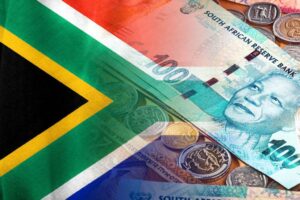As global investors shift their gaze to the Federal Reserve’s Jackson Hole symposium later this week, the U.S. dollar remained resilient on Monday, sustaining its upward trajectory from the past five weeks. Last week, the dollar advanced 0.7% against the euro, and even further against the yen and Antipodean currencies—Australia and New Zealand’s dollars. This rally comes as the U.S. Treasury yields rise in anticipation of higher, longer-lasting interest rates.
China’s Rate Cut Fails to Impress Markets
In contrast, markets were notably disappointed when China implemented a less-than-expected cut to its one-year benchmark lending rate by only 10 basis points. Notably, its five-year rate remained untouched, against forecasts that anticipated a 15 basis point cut for both. What does this signify for the average investor? The Chinese yuan subsequently weakened against the dollar, contributing to a general sentiment of a lackluster Chinese economy.
The Antipodean Connection
Why does this matter to currencies like the Australian and New Zealand dollars? Often regarded as a liquid proxy for the yuan due to regional exports to China, these currencies face a double threat as higher U.S. interest rates boost the dollar. The Commonwealth Bank of Australia suggests that this trend may see the Australian dollar dip below $0.60 by year-end, unless China unveils a substantial stimulus package focused on infrastructure.
The Euro and British Pound: Where Do They Stand?
While the euro held at around $1.0880 and the British pound hovered at $1.2739, Sterling recently faced pressure due to less-than-optimistic retail sales data in the UK. However, stronger-than-expected British GDP and wage numbers have upheld the market’s expectations for continuous Bank of England interest rate hikes, suggesting a certain resilience in the face of ongoing inflation.
South African Rand and Global Dynamics
Locally, the South African rand strengthened ahead of the upcoming BRICS summit and monthly inflation data. Yet, it is noteworthy that the currency has declined by roughly 6% this month. Analysts at Rand Merchant Bank cited the dominant influence of global factors over the local market, pointing towards China’s economic condition as a significant concern.
Waiting for Jackson Hole
As for what to watch next, the upcoming Jackson Hole symposium is high on investors’ agendas. Federal Reserve Chair Jerome Powell’s Friday address may serve as a guide to U.S. interest rate directions, especially with U.S. 10-year yields touching a 10-month high last week. Analysts like Vishnu Varathan of Mizuho Bank speculate that global policy-makers might maintain higher real rates to guard against volatile inflation, potentially marking an end to decades of ultra-low rates backed by ultra-low inflation.
A Broad View on Global Markets
In Asia, disappointment in China’s rate cut decision led to a drop in stocks, including a 0.4% decline in Chinese blue-chip indices. Meanwhile, European and U.S. futures showed little change. Stock valuations have been pressured partly by the U.S. 10-year yield reaching 10-month highs, which suggests that investors are keenly waiting to hear Powell’s insights at Jackson Hole.
By carefully balancing different global economic factors, investors seem poised for a period of uncertainty that could be clarified—or further complicated—by policy decisions in the coming days. It’s a waiting game, and the next move from world leaders and central banks could set the tone for the remainder of the year.














